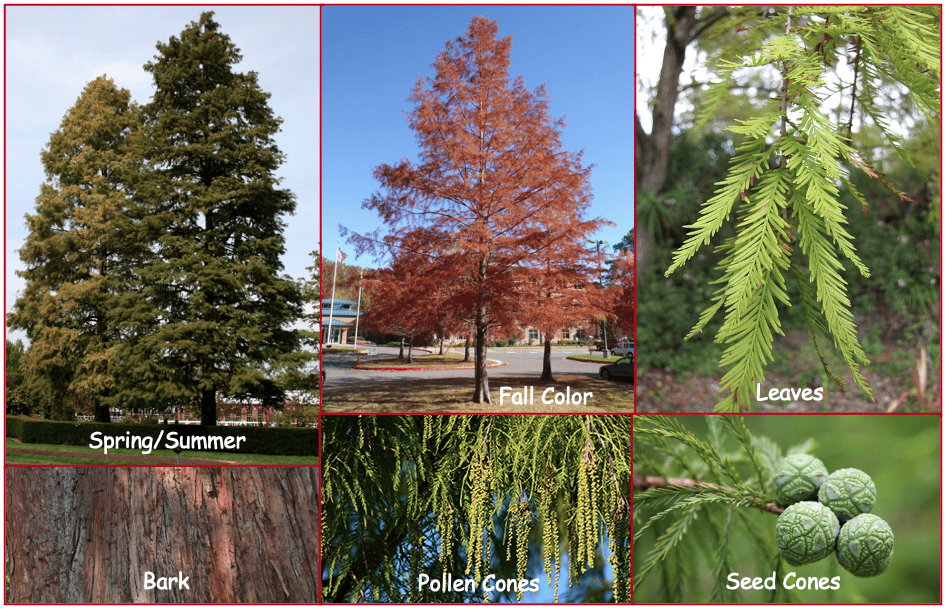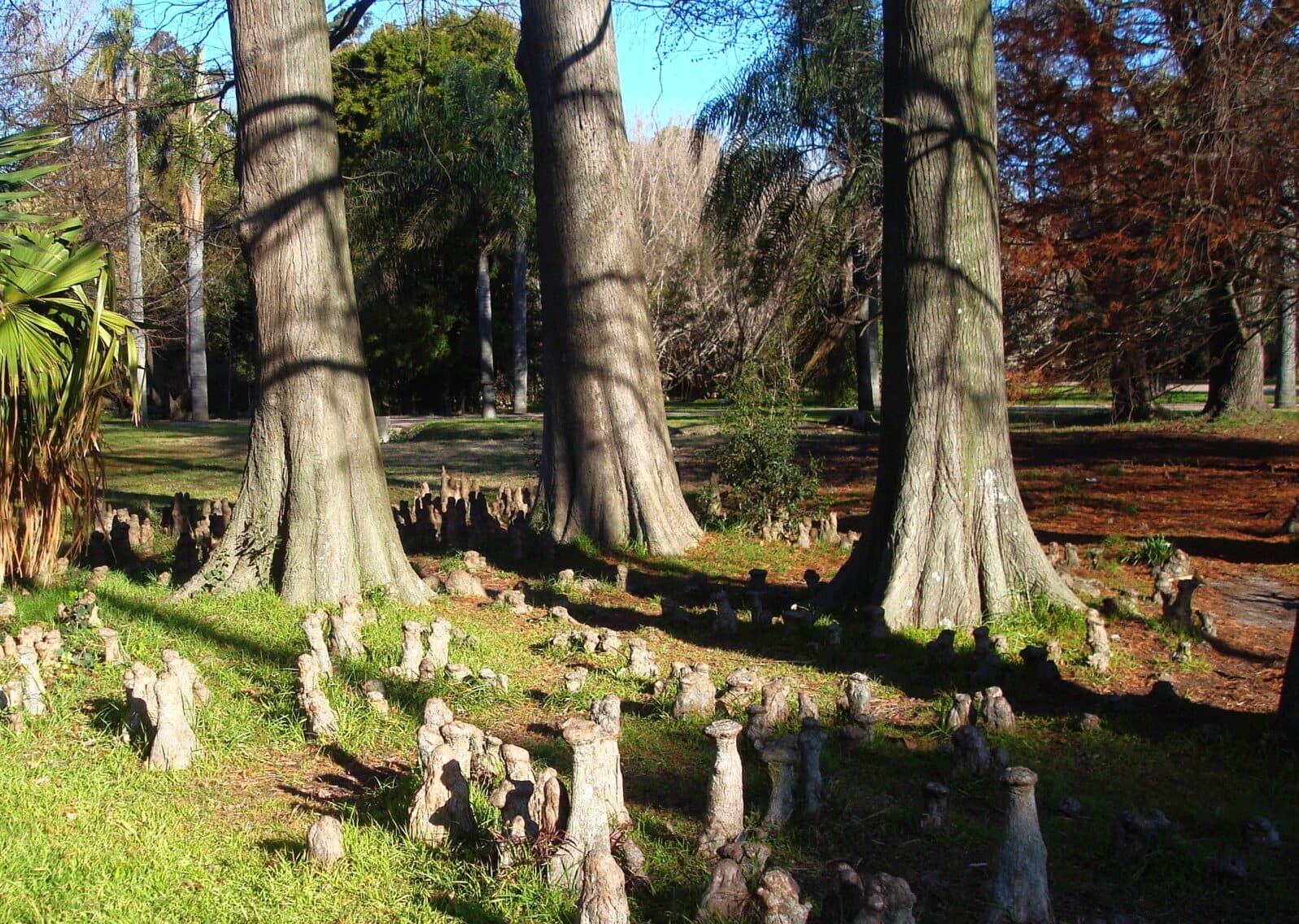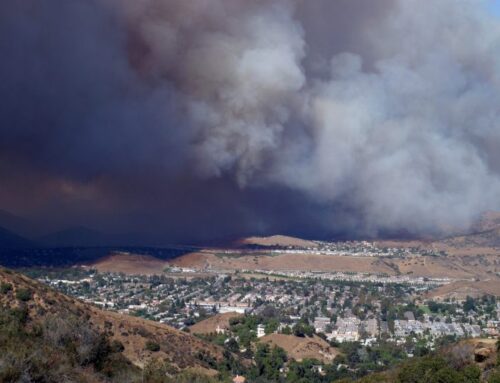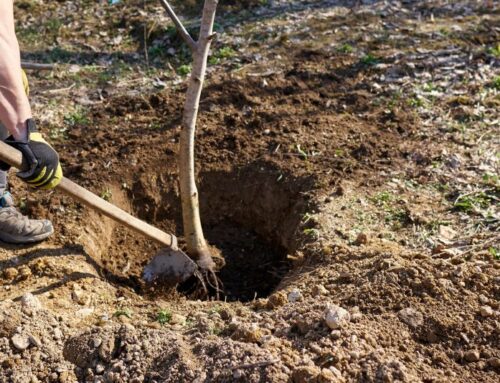
With their large, pyramidal form, bald cypresses truly are majestic trees. Sometimes, they are confused with dawn redwoods. Both bald cypresses and dawn redwoods are large, deciduous conifers. But bald cypresses have alternate needle attachment and are native to the Southeastern United States. Dawn redwoods have opposite needle attachment are native to China. Bald cypresses grow well in wet environments are often used as specimen trees in arboreta and parks. Their flared trunks and "knees" (read below!) help them survive in wet conditions.
NAME & ORIGIN
Family: Cupressaceae
Scientific Name: Taxodium distichum
Native to: Southeastern U.S.
CHARACTERISTICS
Foliage Type: Deciduous
Tree Form: Pyramidal
Leaves: Needles, opposite
Pollen Cones: Small, in pendulous clusters
Seed Cones: Small, green or brown cones
Mature Tree Height: 50-80 ft
Mature Tree Spread: 25-35 ft
COMMON ISSUES
Root rot, beetle borers, chlorosis in alkaline soils.
SUITABLE FOR:
Sunset Zones: 2-10, 12-24
USDA Zones: 5-10
Sun Exposure: Full sun to part shade
Soil Moisture Level: Moist.
Uses: Specimen or shade tree for larger landscapes. Riparian, coastal, and pond landscapes. Many cultivars available.

"Knees" growing out of bald cypress trees.
DID YOU KNOW?
Bald cypresses naturally grow in swampy areas, outcompeting other trees. How do they survive? One way is by developing "knees", or root appendages that protrude from surrounding soil and water. Scientists postulate that the knees provide extra stability and food storage. But you might notice that in drier, man-made landscapes, bald cypresses don't have knees. Don't worry, there's nothing wrong with them - they just don't need the knees there. Anyways, who wants tree knees sticking out of lawns and sidewalks!





